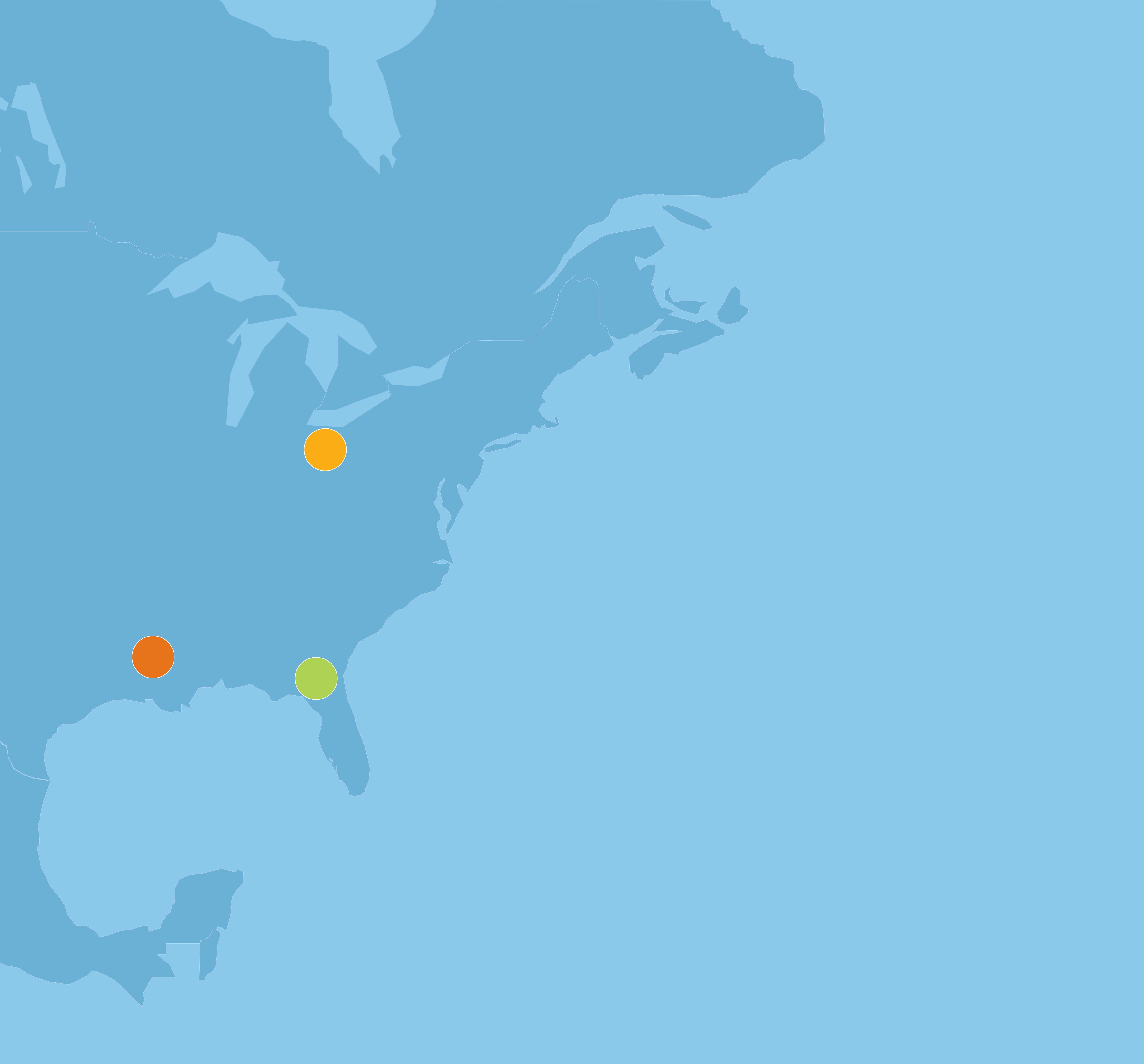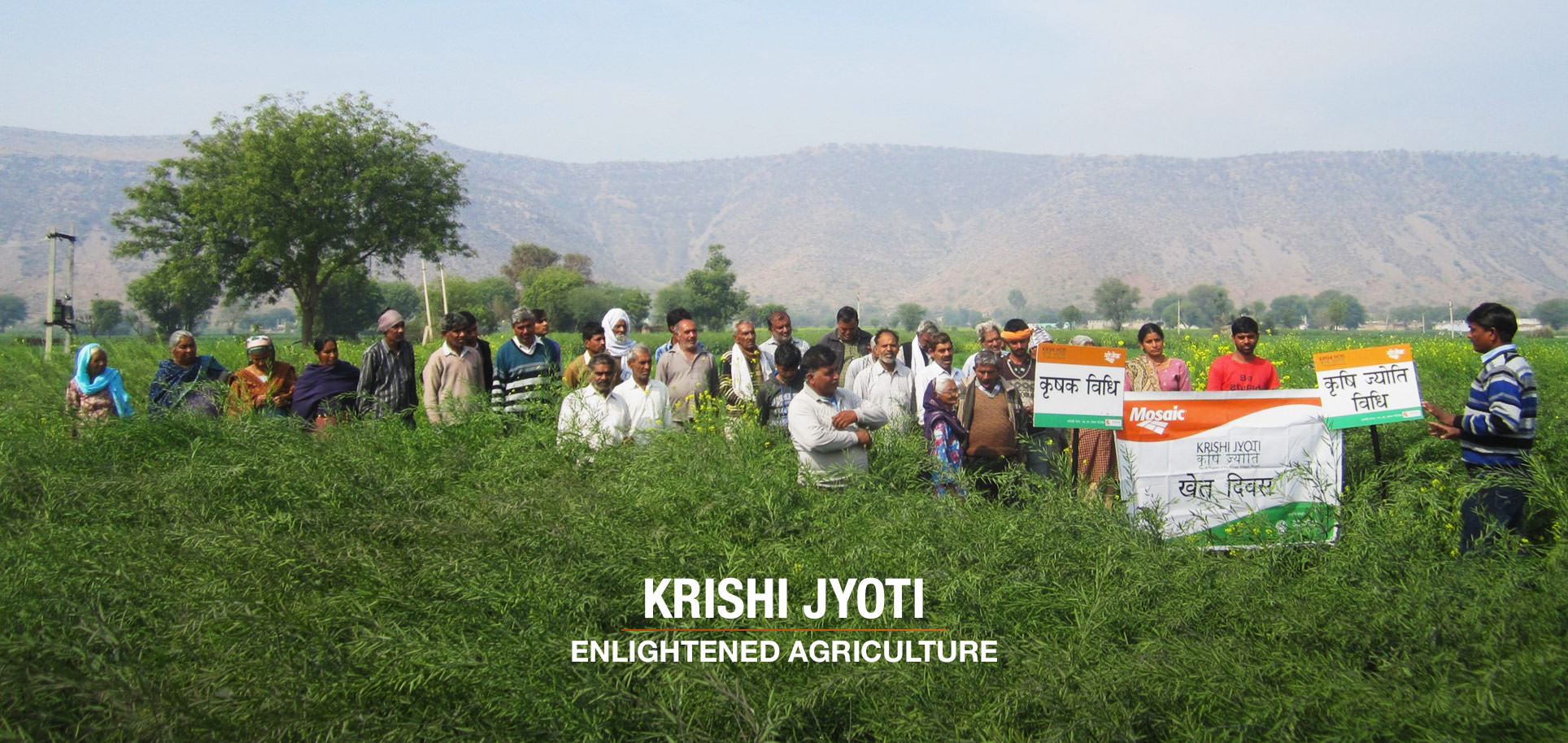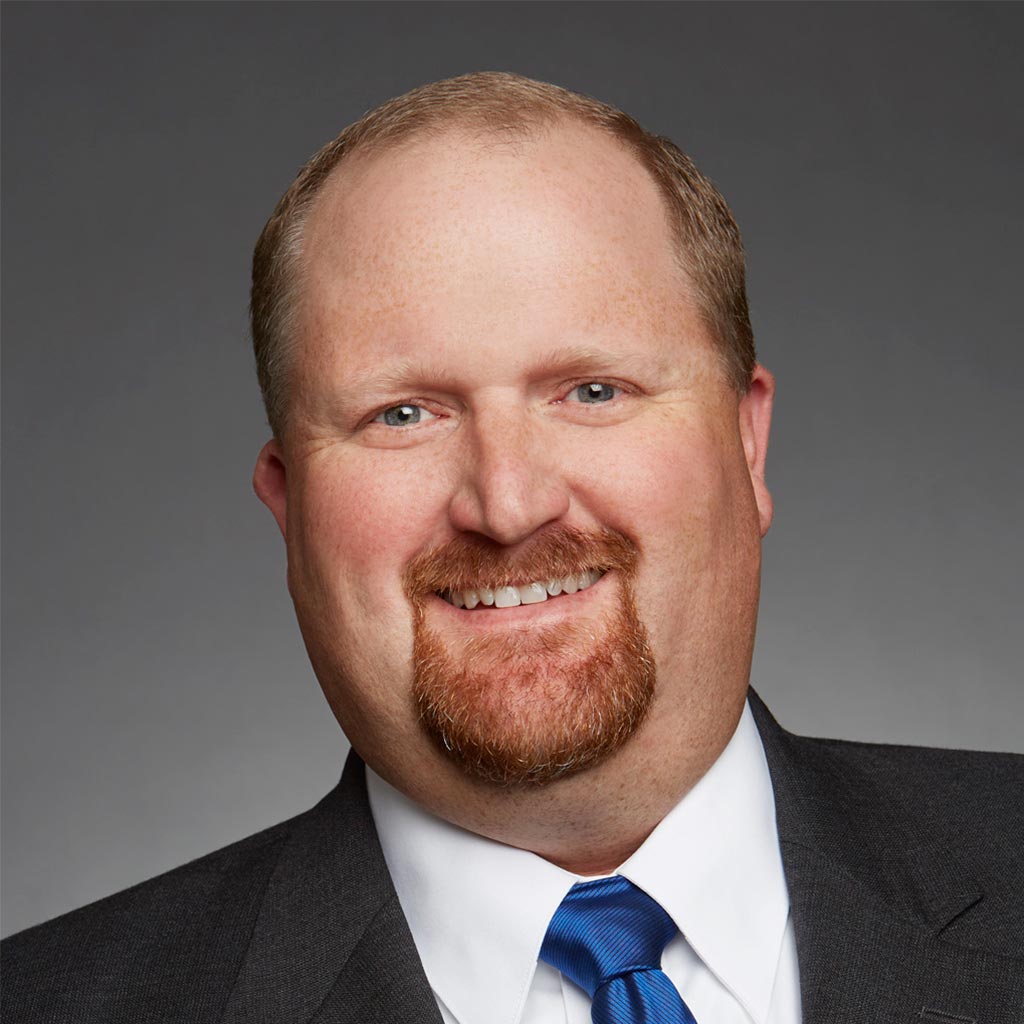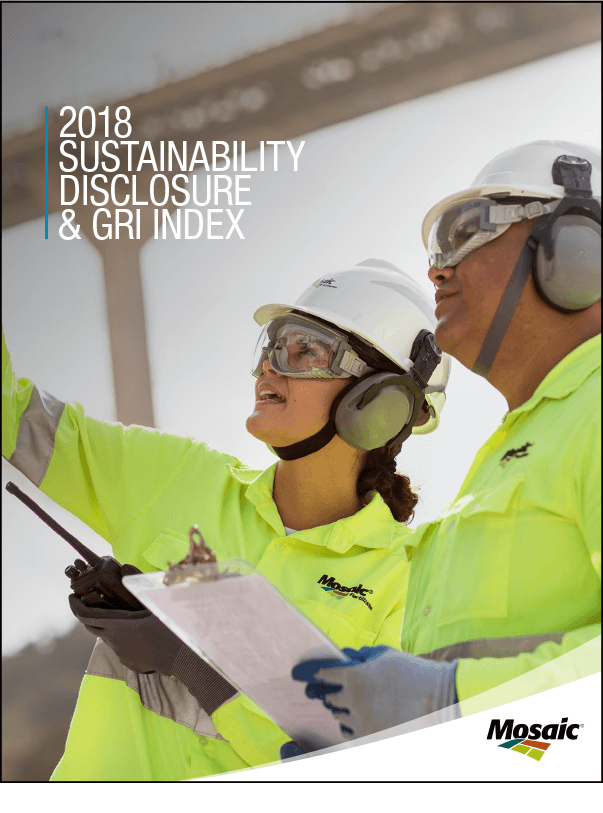FOOD
2018 SUSTAINABILITY HIGHLIGHTS
FOOD SECURITY DEPENDS ON OUR INVOLVEMENT
The global population is expected to reach 9.8 billion by 2050. Experts estimate agricultural productivity must increase 70% from current levels to feed the planet. As global prosperity increases, so does the demand for crops and livestock. Further, 90% of the food supply will have to come from land already in production because land expansion will not fulfill crop production needs.
During the last several years, record-breaking harvests have removed more and more phosphorus and potassium from farm fields across the globe. Because crop nutrients are not self-sustaining, when crop production steps up, so does the need to replace harvested nutrients. Sustainably growing more food depends on fertilizers, which are responsible for producing up to 60% of all crop yields. With nutrient-deficient land throughout growing regions, crop nutrients are fundamental to producing enough nutritious food, fiber and fuel to sustain world needs. This is where Mosaic comes in.
crop nutrient tonnes produced
21,400,000
for farmers in 40 countries around the globe. See our Strategic Presence for more information about our product reach.
Partnerships Drive Progress
At Mosaic we promote, partner, invest and engage in nutrient stewardship efforts across North America. For the sake of both the environment and the future of agriculture, one challenge to overcome is nutrient runoff. When nutrients run off farmland into a waterway, they can contribute to impaired water quality and can also nourish algal blooms. Other sources of nutrients that can run off into local waterways include livestock manure, urban storm water, municipal wastewater discharge and lawn fertilizer. It is in everyone’s best interest that nutrients are used efficiently.
The concept of nutrient stewardship is simple, but implementation is knowledge-intensive and varies farm by farm. We seek partnerships with organizations that have the local relationships and knowledge necessary to advance nutrient stewardship in a way that maximizes positive impact. Our vision? Clean water for every generation.
The map below highlights three of Mosaic’s many nutrient stewardship partners in North America.
By the Numbers
Partnerships
Total funding since 2004
Acres of farms
Watersheds in 4 countries

NUTRIENT STEWARDSHIP COUNCIL—4R NUTRIENT STEWARDSHIP CERTIFICATION PROGRAM
OHIO AND GREAT LAKES REGION
Since 2012, this program has been led by the agricultural industry to help enable nutrient service providers in becoming certified under consistent and recognized 4R practices. The program aims to maximize crop nutrient uptake and minimize crop loss, positively impact local water bodies, provide up-to-date information on nutrient stewardship, and help the agricultural sector adapt to new research and technology. More than 50 nutrient service providers and retailers are now certified—servicing 7,000 farmers and covering over 3.1 million acres—with help from The Mosaic Company Foundation’s nearly $640,000 investment. In addition, the 4R Research Fund is funding Dr. Kevin King’s research in the Western Lake Erie Basin, where 4R practices are being evaluated on environmental outcomes in relation to surface runoff.
DUCKS UNLIMITED—RICE STEWARDSHIP PARTNERSHIP
MISSISSIPPI ALLUVIAL VALLEY REGION
Mosaic supports a partnership between Ducks Unlimited and USA Rice that focuses on optimizing water and nutrient management, energy efficiency, and wildlife habitat on U.S. rice farms (wetlands). Wetlands are habitat for North America’s waterfowl population and other at-risk species, and they also help preserve water quality by capturing crop nutrients and sediment that might otherwise enter rivers and lakes. The Mosaic Company Foundation, through its $1.35 million investment in this partnership, supports on-farm improvements for rice growers in Arkansas, Louisiana, Mississippi and Missouri, resulting in increased on-farm sustainability and profitability.
THE NATURE CONSERVANCY—WESTERN FLORIDA AGRICULTURE PROGRAM
SOUTH ATLANTIC GULF REGION
This program, led by the agricultural industry since 2012, helps nutrient service providers achieve certification under consistent and recognized 4R practices—incorporating the Right nutrient source, at the Right rate, at the Right time and in the Right place.
Mosaic’s support of The Nature Conservancy (TNC) has helped advance 4R Nutrient Stewardship practices and increase crop yields, all while reducing agriculture’s environmental impact. Mosaic and TNC are working together to achieve increased implementation of farming best management practices, reduced nutrient loss and improved water quality for all Floridians. Through this collaboration and with The Mosaic Company Foundation’s more than $3.1 million investment, over 4,500 farmers, growers and ranchers have received the 4R message—representing more than 350,000 acres.
In addition to this project, Mosaic also partners with TNC to fund the North American Ag Program. Through this program, TNC has established a platform of global priorities, which includes support for the development of sustainable agriculture to meet global demands for food, while safeguarding the lands and waters vital to people and nature. A section of this project supports the larger TNC goal to manage the soil health of half of all the U.S. row crop acres by 2025.
Growing Stronger Together
With the world’s ever-growing population, helping farmers to be more productive is crucial. Smallholder farmers—those with fewer than 25 acres—work 90% of the world’s farms, but many of these growers are food insecure and struggling to earn a living and feed their own families. In India, this issue is even more critical since average yields are 50 to 70% lower than yields of top global producers.
Seeing this as an opportunity where we could help educate farmers and increase crop production, the Krishi Jyoti, or “enlightened agriculture,” Project was created.

The 5 key focus areas of the Krishi Jyoti Project
1. Soil health
2. Seed & fertilizer inputs
3. Water management
4. Agronomic expertise
5. Financial support
Krishi Jyoti began 10 years ago through a partnership led by Mosaic, the Sehgal Foundation and The Mosaic Company Foundation. Since then, we’ve made massive strides in helping to close the agricultural yield gap in India. Our hands-on collaboration with local farmers and leaders leverages Mosaic’s agronomic and business expertise and the Sehgal Foundation’s proven approach to sustainable community development. The impacts of providing agricultural education have benefitted more than 60,000 people on more than 19,000 acres. These farmers have even seen increases in their income by up to $360 per hectare and in yields by as much as 45%.
But the goal of this project is not only to increase crop yields. It’s also to ingrain best practices within communities so that long-term progress is sustained and additional farmers can go through the program. As of 2018, 75 villages are participating in Krishi Jyoti Projects per year. And our efforts don’t stop there. We go well beyond improving agriculture with this project by improving conditions of educational facilities within the villages. In fact, more than 5,000 children have benefited from renovations at local schools.
This collaboration has been celebrated through awards on outstanding research, innovation and outreach in the area of crop nutrition and community needs, and it truly is an example of Mosaic living its mission to help the world grow the food it needs.
Krishi Jyoti also promotes water conservation through harvesting rainwater and encouraging water-efficient irrigation technologies. More than 24,000 farmers have benefited from 10 check dams with more than 22 million gallons of water storage capacity. Learn more about our water conservation efforts.
MicroEssentials®
Employee Spotlight

Name
Kyle Freeman
Title
Director of New Product Development
Years at mosaic
8
Location
Plymouth, Minnesota
Putting our work to the test as diligently as we have allows us to continue having a trusted leadership role in the industry.
Kyle Freeman
Our Interview with Kyle
Q. In 2018, Mosaic shipped a record amount of MicroEssentials®—3 million metric tonnes. What makes Performance Products like MicroEssentials so important to agriculture?
A.From an agriculture industry standpoint, fertilizer technology had been stagnant and commoditized for decades, and then along came MicroEssentials. Mosaic took a traditional commodity product, and added value by combining secondary and micronutrients in one granule. Our proprietary process of producing MicroEssentials provides uniform nutrient distribution across the field and increases nutrient uptake within the plant, which results in higher yields. MicroEssentials was the innovation agriculture needed. As a result, farmers and growers saw—and continue to see—this technology as the path to raise their standards when it comes to crop nutrition.
Q. How does Mosaic test Performance Products, and why do they invest so much in the research?
A.Every year, we have nearly 2,000 trial plots around the globe that test products like MicroEssentials, Aspire® and K-Mag® with multiple crops in multiple geographies. Not very many companies study their products to the extent Mosaic does. We have invested so much in research that farmers and retailers have confidence in MicroEssentials and other products we’ve brought to market. Putting our work to the test as diligently as we have allows us to continue having a trusted leadership role in the industry.
Q. What can you tell us about new products coming up?
A.Mosaic continues to look for the next MicroEssentials—the next thing in crop nutrition. I’m excited that we’ve created a team with the purpose of looking for opportunities and solutions—we are not just looking at potash and phosphate, but also new capabilities that will deliver value and add the next dimension of growing food for a growing world. In the end, one of the most important ways we measure success is yield. Are we helping growers provide more and higher-quality food in a sustainable way? That is one of the most rewarding parts of my job here at Mosaic.
 2018 Sustainability Disclosure & GRI Index
2018 Sustainability Disclosure & GRI Index
Download Printable PDF >
Reporting and transparency have been integral to Mosaic’s sustainability journey. For a full list of our voluntary reporting efforts, please visit our website. View our 2018 Sustainability Disclosure & GRI Index to learn more about our sustainability progress.